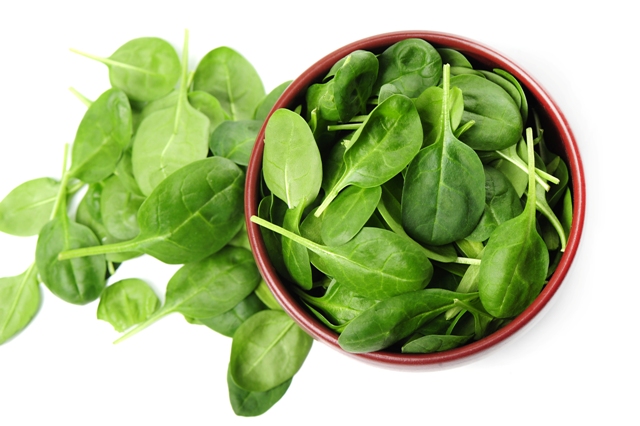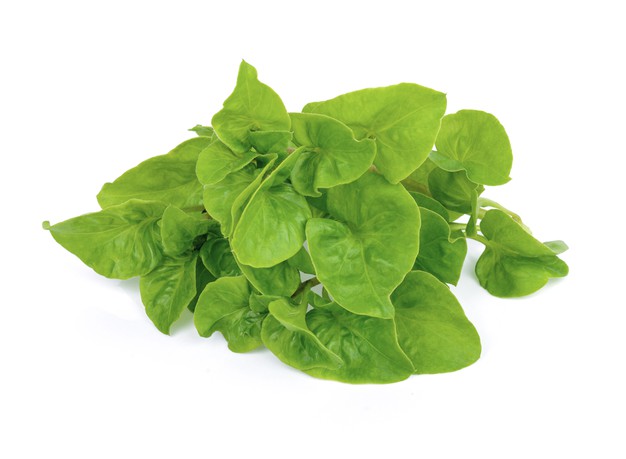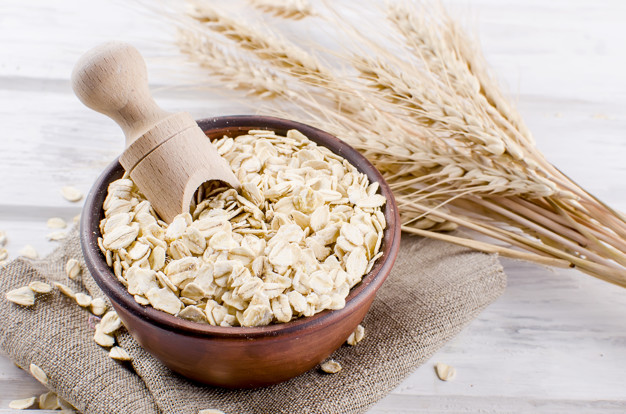Spinach is a green leafy vegetable belongs to amaranth family. It is extremely nutritious and offers numerous health benefits.
Nutritional profile
- It contains lesser amount of carbohydrates but most of the carbohydrates are consisting of fibre (especially insoluble fibre). It contains very small amount of sugar as well mainly in the form of fructose and glucose
- It contains lesser amount of protein too
- It contains negligible amount fat
- It does not provide enough calories on its oxidation thus it is considered as a low calorie food
- It is also considered as a perishable food as it contains about 90% of moisture
- It contains several vitamins like Vitamin A, Vitamin C, Vitamin E, Vitamin K, Vitamin B1, B2, B3, B6 and B9
- It is also packed with various trace elements, which include calcium, phosphorus, potassium, magnesium and iron
Important plant compounds of spinach
Spinach is also composed of various important plant compounds, like –
Kaempferol: it acts as antioxidant and helps to protect the body from oxidative stress
Lutein: it helps to improve eye health
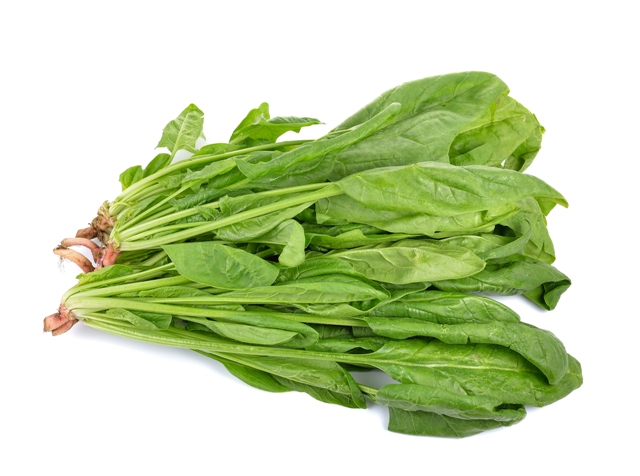
Zeaxanthin: it also helps in improving eye health and vision

Quercetin: it also acts as antioxidant and helps to decreases the prevalence of inflammation as well as infections
Nitrate: it helps to prevents hypertension and also plays vital role in promoting overall cardiac health
Biological activity
Antioxidant activity
- We all know that free radicals are byproduct of metabolism, which cause oxidative stress and oxidative stress is responsible for increasing the susceptibility of various chronic diseases
- Consumption of spinach is thought to be an important remedial action for oxidative stress as it helps to prevent all the damages caused by it
- Its antioxidant activity is also responsible for decreasing the concentration of free radicals within body
Anti-inflammatory activity
- Violaxanthin and neoxanthin are the two most important plant compounds present in spinach exert potent anti-inflammatory activity
- It helps to delay the onset of inflammatory events within body by decreasing the concentration of inflammatory mediators as a result helps to reduce the risk of developing chronic inflammatory diseases
Anti-carcinogenic activity
- It helps in reducing the prevalence of cancers by exhibiting anti-carcinogenic activity
- Its carotenoids and zeaxanthin components are also responsible for flushing out free radicals from body and these free radicals make the body prone to various diseases including cancers
- It plays significant role in hindering the growth of malignant cells and tumor cells
- It is extremely effective for reducing the prevalence of mouth cancer, stomach cancer and esophageal cancer

Hypotensive activity
- Its hypotensive activity makes it a supper food for hypertension. Potassium and nitrate components of spinach are considered as main constituents responsible for exhibiting hypotensive activity
- It acts as vasodilator that helps in widen the blood vessels, which subsequently decreases high blood pressure
- It also helps to calm the body as well as the mind, which is responsible for reducing the susceptibility of hypertension and its calming effect helps in preventing stress and anxiety too
- Its Vitamin C content is also accountable for reducing hypertension
Health benefits
Role on immunity
- Consumption of spinach is very effective for improving the overall immunity of the body as it contains various immune boosting nutrients
- Its Vitamin C content helps in promoting the synthesis of WBC that helps to make the body able to fight against infections
- Its Vitamin A content is also associated with strengthening the mucus membranes of the body that ultimately helps to protect the body from invaders
Role on skeletal system

- It plays vital role in maintaining a good skeletal system. It contains significant amount of calcium, phosphorus, Vitamin K and all of these nutrients are extremely important for obtaining a healthy skeletal system
- Its calcium and phosphorus component help in healthy bone formation
- It helps in bone mineralization too, as a result helps to improve bone mass, bone mineral density and bone strength
- Its Vitamin K component is involved in bone metabolism and also helps in maintaining healthy skeletal system
- It plays imperative role in reducing the risk of developing osteoporosis
- It helps in strengthening the teeth as well
Role on eye health
- Lutein and zeaxanthin are the two important antioxidants found in spinach that aid in providing good eyesight
- Its Vitamin A content is responsible for maintaining the mucus membranes of the eye, which is extremely important for normal eyesight thus its consumption is thought to be very effective for promoting vision
- It plays imperative role in protecting the eye from cataracts, macular degeneration and other eye problems
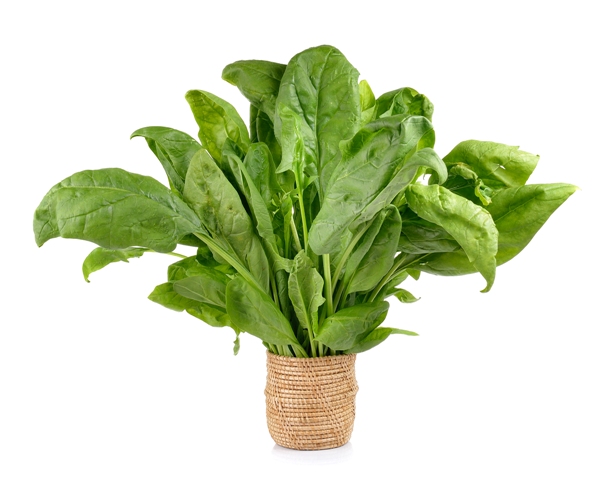
Helps to keep the body relaxed
- Consuming spinach is very useful for maintaining a stress free life because it helps to keep the mind calm thus individual do not get tensed
- Magnesium and zinc components of spinach help to promote sleeping and good sleeping is an important feature for keeping mental illnesses at bay

Role on nervous system
- It helps to keep the brain active
- It is very helpful for smooth brain functioning especially during old age
- It is associated with stimulating the transmission of nerve impulses as well
- Its consumption is also responsible for enabling an individual to think intelligently
- It helps to improve memory too
- Vitamin K present in spinach plays imperative role in promoting the health as well as the functionality of nervous system and it also helps in normal behavior
- It is better to include spinach in diet for decreasing the risk of developing neurological disorders
Role on skin
- If you are looking for obtaining a healthy glowing skin then you should try spinach
- It contains various nutrients that help in nourishing the skin as a result promote skin health
- Its Vitamin A and Vitamin E components act as antioxidant and play imperative role in protecting the skin from oxidative damages thus help in reducing the susceptibility of dermal disorders
- It is very useful for preventing acne. It has seen that spinach helps in removing dart as well as extra oil, which are accountable for causing acne
- Vitamin C present in spinach helps in improving skin elasticity by promoting collagen synthesis
- It helps in improving skin texture as well
- It is also associated with preventing premature aging and helps in rejuvenating the skin thus its consumption is thought to be very effective for making an individual looks younger

Therapeutic uses
It has been traditionally used for various therapeutic purposes, like –
- It is used as an important preventive measure for anemia. Its iron and folic acid components are accountable for stimulating the production and maturation of hemoglobin as well as RBC, which ultimately helps in improving the quality as well as the vitality of blood, thus reduces the prevalence of anemia
- It helps to boost up the overall metabolism of body
- It is also very useful for facilitating weight reduction
- It is used as an important therapeutic substance for cardiac health as well. Its lipid lowering activity is responsible for decreasing the prevalence of atherosclerosis and coronary artery disease. Its magnesium content helps in preventing arrhythmias. It is also related with reducing the prevalence of strokes and heart attacks
- It is very useful for reducing blood sugar concentration too
Risk factors
- Though spinach is extremely health worthy but its excessive consumption may increase the risk of developing kidney stones
- Individual who are on blood thinner medicines should consult with health experts before consuming it


Source:
Abu Al-Qumboz, M.N. and Abu-Naser, S.S., 2019. Spinach Expert System: Diseases and Symptoms. International Journal of Academic Information Systems Research (IJAISR), 3(3), pp.16-22.
Miano, T.F., 2016. Nutritional value of Spinacia oleraecea spinach-an overview. International Journal of Life Sciences and Review, 2(12), pp.172-174.
Ramaiyan, B., Kour, J., Nayik, G.A., Anand, N. and Alam, M.S., 2020. Spinach (Spinacia oleracea L.). In Antioxidants in Vegetables and Nuts-Properties and Health Benefits (pp. 159-173). Springer, Singapore.
Roberts, J.L. and Moreau, R., 2016. Functional properties of spinach (Spinacia oleracea L.) phytochemicals and bioactives. Food & function, 7(8), pp.3337-3353.
Singh, J., Jayaprakasha, G.K. and Patil, B.S., 2018. Extraction, identification, and potential health benefits of spinach flavonoids: a review. Advances in Plant Phenolics: From Chemistry to Human Health, pp.107-136.
